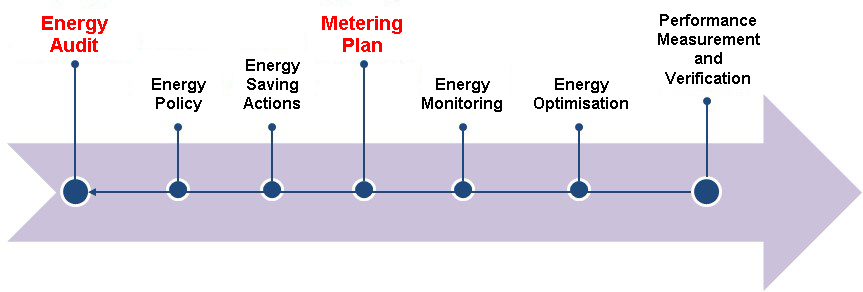The Importance of Metering and Monitoring Energy Consumption
There are proven business benefits to putting in place metering and monitoring of energy consumption. According to the Carbon Trust, typically, 20% of a business’ annual energy costs are wasted through the use of energy inefficient equipment. A British Gas survey of several thousand smart meters showed that 46% of SME total electricity use is out of hours between 6pm and 8am, and other sources claim many industrial installations are seeing a 50% reduction in efficiency from heat loss due to poor or missing pipe lagging. It is also the case that up to 60% of an offices heat is lost through the fabric of the building.
With these statistics in mind, monitoring power and energy usage in a facility or installation can often identify hidden issues that affect both operational and environmental quality, can pinpoint the reason for higher than desired energy costs, and can reveal the causes of more frequent equipment repair and replacement.
The energy delivered to any industrial or commercial facility is generally considered to be in the form of electricity and gas, and statistics show in commercial and other tertiary environments in Western Europe this is often broken down into the following shares.
Heating (50%)
Lighting (25%)
Hot water production (10%)
Cooling – Air Conditioning (5%)
Permanent auxiliaries (pumps and fans) (10%)
The importance of evaluating energy use led to the creation of BREEAM (Building Research Establishment Environmental Assessment Method), first published by BRE in 1990, which is now the world’s longest established method of assessing, rating, and certifying the sustainability of buildings.
In industry, there are generally several types of energy use. Energy used by manufacturing processes, such as sterilisation, curing, electrolysis, etc., or for use throughout the facility, including the production of compressed air, or steam, heating or cooling, as well as motorised systems and lighting.
Industrial energy consumption can also be considered as direct or indirect. Direct energy consumption involving the use of energy in the form in which it is provided, natural gas to supply an oven, electricity for motors or electrolysis, and indirect energy consumption being where the primary energy is, for example, converted into steam via a boiler to supply processes such as dryers, ovens, etc.
Energy usage can also be defined as permanent, intermittent, specific and significant. For the industrial sectors, significant energy use (SEU) is particularly important in an ISO50001 approach, as the primary stage of the energy review requires the body to identify its significant energy uses.
Significant energy is defined as energy use representing a significant share of energy consumption and / or offering considerable potential for improving energy performance.
Understanding the significant energy use in a facility gives an opportunity to question the upstream volume and nature of energy at its point of delivery, as well as downstream energy performance of facilities, equipment, systems, and processes.
The objective of this would be to quantify the most economical sources of energy, set the energy policy of the business to improve its energy performance, and to calculate the return on investment of any incurred expenses.

Monitoring and controlling the consumption of energy generally consists of two important stages, the energy audit and a metering plan. And the implementation of these represent the first steps along the path to improving the energy performance of an organisation.

The energy audit provides a detailed insight into energy consumption, and highlights improvements in energy and production efficiency.
The metering plan, specific for every organisation, is essential to measure and compare consumption over time. It involves the implementation of metering and measurement equipment to calculate the EPI (Energy Performance Index) and consumption.
The analysis of all of this data makes it possible to validate, or invalidate, the saving actions undertaken, and to keep an optimised level of energy performance over the long term.

